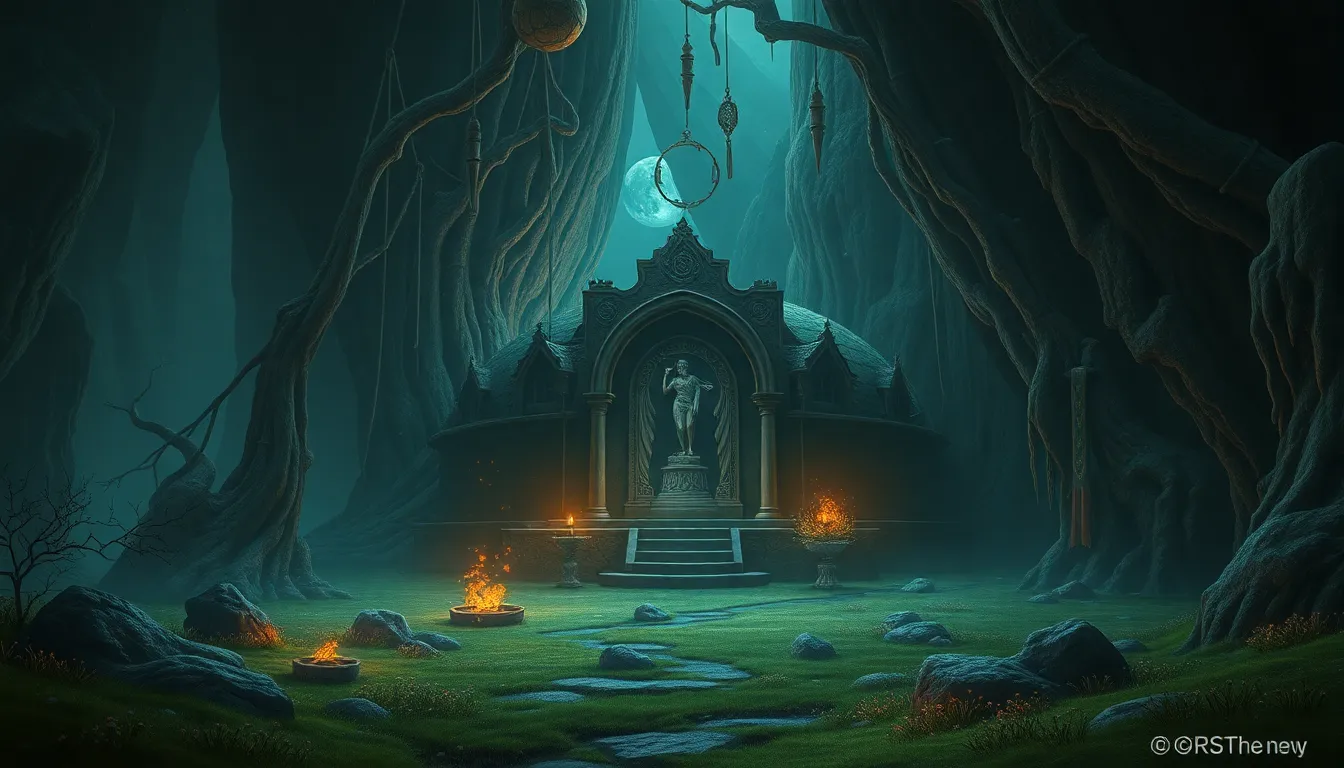The Mythical Sanctuary: Finding Refuge in Sacred Spaces
I. Introduction to Sacred Spaces
Sacred spaces are locations that hold special significance, often imbued with spiritual or religious meaning. They can range from grand temples and churches to quiet corners in nature. The importance of these sanctuaries is evident across cultures, reflecting humanity’s deep-rooted desire for connection, reflection, and refuge. This article aims to explore the multifaceted nature of sacred spaces, delving into their historical contexts, psychological benefits, and contemporary interpretations, while emphasizing their enduring significance in our lives.
II. Historical Perspectives on Sacred Spaces
Throughout history, various civilizations have established sanctuaries that serve as focal points for worship, community gathering, and personal reflection.
A. Ancient Civilizational Sanctuaries
Ancient cultures built temples and shrines to honor their deities. For example:
- The Parthenon in Athens: A temple dedicated to the goddess Athena, symbolizing the cultural and political power of Athens.
- The Pyramids of Giza: These monumental structures served not only as tombs but also as sacred spaces for the worship of the sun god Ra.
- The Stonehenge: A prehistoric monument in England, believed to be a site for rituals and astronomical observations.
B. Evolution of Sacred Spaces Through History
As societies evolved, so did the concept of sacred spaces. From grand cathedrals of the Middle Ages to the intimate prayer rooms of modern times, these spaces have adapted to meet the spiritual needs of their communities.
C. Case Studies of Notable Historical Sanctuaries
Examining places like the Vatican, Mecca, and Jerusalem reveals how historical events, cultural exchanges, and religious practices have shaped our understanding of sanctity.
III. The Psychological Benefits of Sacred Spaces
The concept of refuge is deeply psychological. Sacred spaces provide a sense of safety and peace that can lead to transformative experiences.
A. The Concept of Refuge and Its Psychological Significance
These spaces offer a retreat from the chaos of daily life, allowing individuals to reconnect with their inner selves and reflect on their experiences.
B. Connection Between Sacred Spaces and Mental Health
Studies have shown that spending time in sacred environments can reduce stress, anxiety, and depression, promoting overall well-being.
C. Personal Anecdotes and Testimonials
Many individuals share stories of finding solace in sacred spaces, whether it’s the tranquility of a forest or the peacefulness of a church. These personal journeys highlight the universal need for sanctuary.
IV. Spiritual and Religious Dimensions
Sacred spaces play a fundamental role in religious practices and community life.
A. Role of Sacred Spaces in Religious Practices
They serve as venues for worship, meditation, and communal gatherings, reinforcing the bonds between individuals and their beliefs.
B. Comparative Analysis of Different Faiths and Their Sanctuaries
Different religions have unique interpretations of sacred spaces:
- Christianity: Churches and cathedrals symbolize community and worship.
- Islam: Mosques serve as centers for prayer and community life.
- Hinduism: Temples are places of devotion and ritual.
C. Rituals and Ceremonies Conducted in Sacred Spaces
Each faith incorporates specific rituals that enhance the sanctity of these spaces, whether through prayer, offerings, or celebrations.
V. Nature as a Sacred Space
The intersection of spirituality and nature has led many to view natural landscapes as sacred.
A. The Intersection of Spirituality and Nature
Many cultures revere mountains, rivers, and forests as sacred entities, embodying the divine and serving as places for reflection.
B. Examples of Natural Sanctuaries
Examples of natural sanctuaries include:
- The Himalayas: Considered sacred by both Hindus and Buddhists.
- Redwood Forests: Many find spiritual solace among the towering trees of California.
- Mount Sinai: A significant site in Judeo-Christian traditions.
C. The Healing Power of Nature in Spiritual Practices
Nature’s beauty can evoke a sense of peace and purpose, often leading to profound spiritual experiences.
VI. Modern Interpretations of Sacred Spaces
In contemporary society, the definition of sacred spaces has expanded to include urban environments.
A. Urban Sanctuaries: Parks, Gardens, and Community Spaces
City parks and community gardens serve as vital sanctuaries for urban dwellers, providing an escape from the hustle and bustle.
B. The Rise of Mindfulness and Meditation Centers
The growing interest in mindfulness has led to the establishment of dedicated spaces for meditation, encouraging people to find tranquility amidst their busy lives.
C. How Modern Society Redefines Sacredness
Today, individuals may find sacredness in unexpected places, from yoga studios to art galleries, reflecting a personal approach to spirituality.
VII. The Role of Art and Architecture in Sacred Spaces
Art and architecture play crucial roles in the creation and experience of sacred spaces.
A. Architectural Elements That Evoke Spirituality
Features such as high ceilings, natural light, and intricate designs can inspire awe and contemplation.
B. Artistic Representations of Sanctuaries Across Cultures
From the frescoes of the Sistine Chapel to the intricate carvings of Hindu temples, art enhances the sacred experience.
C. Case Studies of Renowned Sacred Architectural Designs
Notable examples include:
- St. Peter’s Basilica: A masterpiece of Renaissance architecture.
- The Great Mosque of Samarra: Famous for its unique minaret.
- The Blue Mosque: Renowned for its stunning blue tiles and grandeur.
VIII. Challenges Facing Sacred Spaces Today
Sacred spaces are not immune to contemporary challenges.
A. Environmental Threats and Conservation Efforts
Many natural sanctuaries face threats from climate change and pollution, necessitating urgent conservation efforts.
B. The Impact of Commercialization on Sacredness
The commercialization of sacred sites can undermine their spiritual significance, transforming them into tourist attractions rather than places of worship.
C. Societal Changes and Their Effects on Traditional Sanctuaries
As societies evolve, traditional sanctuaries may struggle to maintain relevance, prompting a need for adaptation.
IX. Personal Journeys: Finding Your Own Sacred Space
Discovering personal sacred spaces is a deeply individual journey.
A. Tips for Discovering Personal Sacred Spaces
Consider exploring the following:
- Visit various environments – both natural and urban.
- Engage in activities that promote mindfulness.
- Reflect on places that evoke feelings of peace and comfort.</



